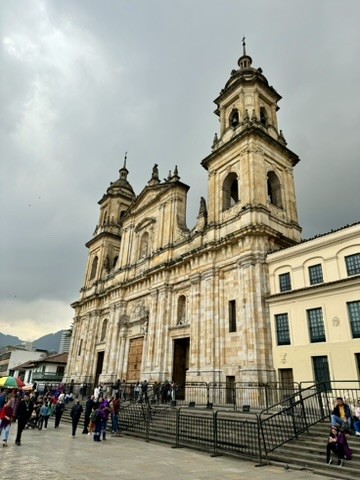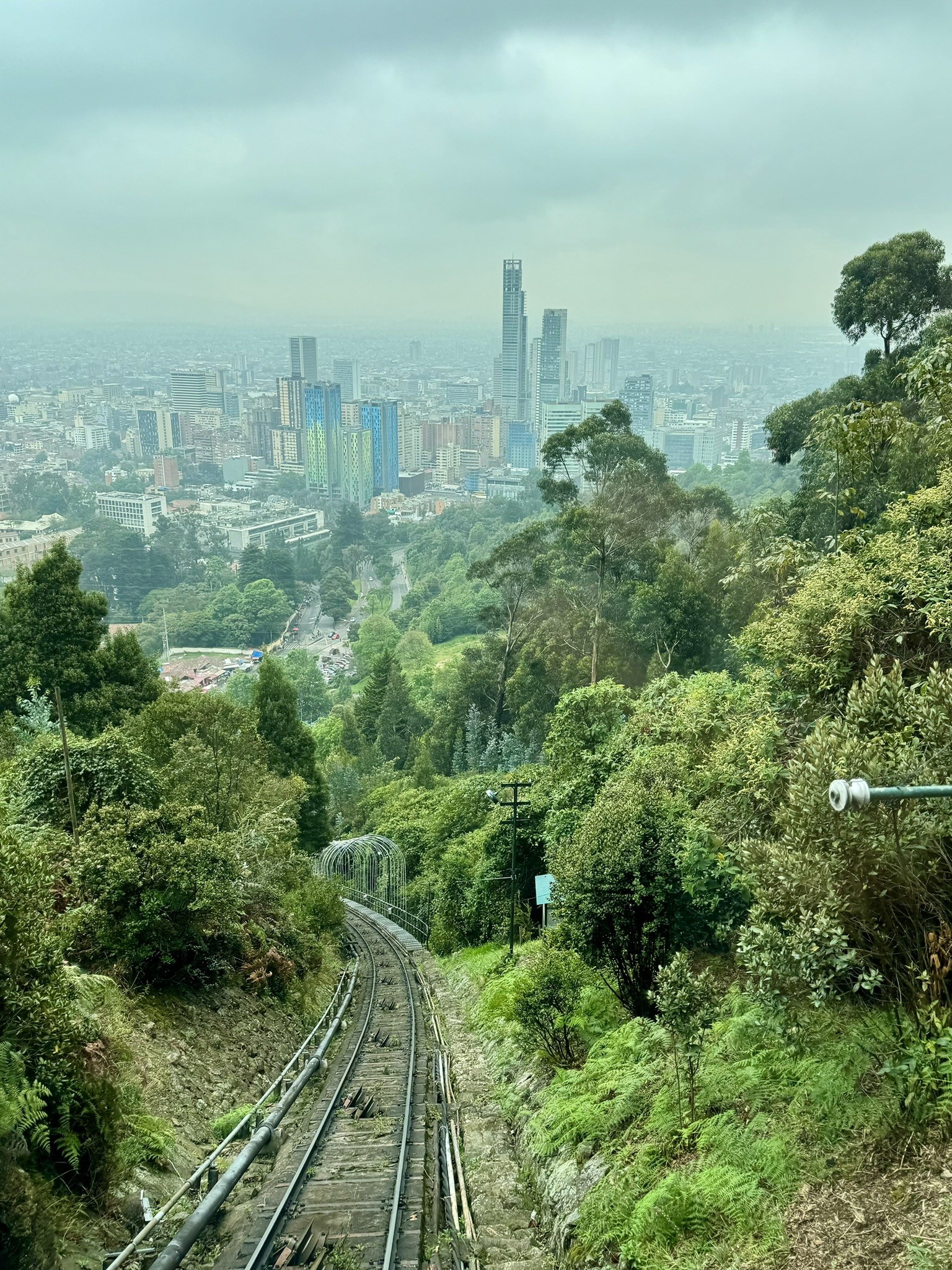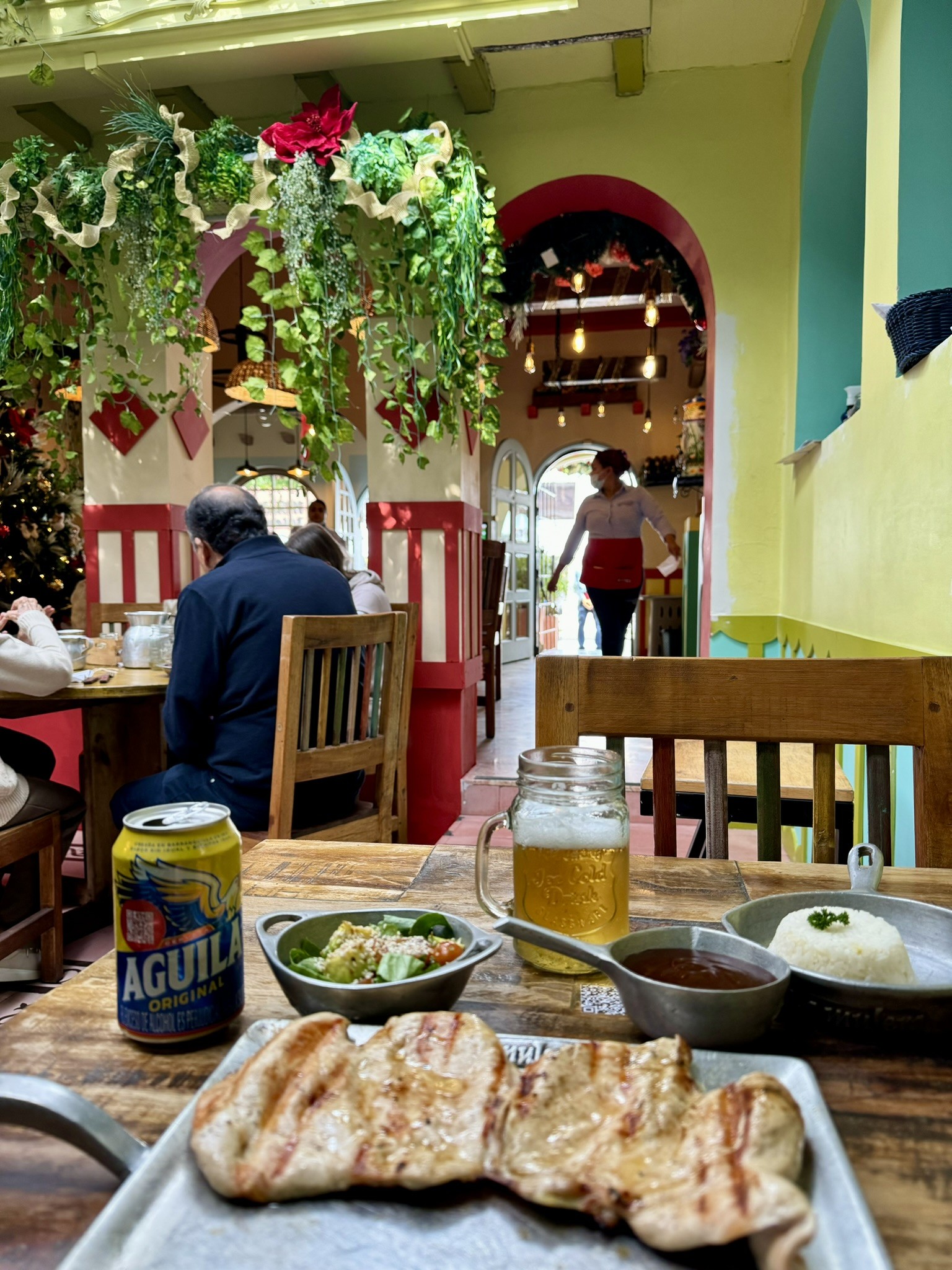Bogota, Colombia, a city of vibrant culture and rich history, often sparks a common question among prospective travelers: Is It Safe To Travel To Bogota? Having explored Bogota multiple times, alongside other Colombian gems like Medellin and Cartagena, I can offer insights into navigating this captivating city safely. My recent trip to Bogota provided an updated perspective on safety measures and precautions for a smooth and secure experience.
Bogota Safety: An Overview
Generally, traveling to Bogota is safe, especially if you stick to reputable neighborhoods and exercise caution, similar to what you would do in major cities like New York or London. Despite Colombia’s past reputation, my wife and I felt secure exploring the city with our young child. A local driver, Sandra, played a crucial role in ensuring our safety by guiding us to secure areas.
Like any major tourist destination, petty theft, pickpocketing, and muggings can occur. However, by implementing simple preventative measures, visitors can significantly minimize these risks. A common saying in Colombia is “no dar la papaya,” which translates to “don’t show your valuables.”
The following are some basic safety tips applicable in any big city: avoid displaying expensive jewelry, keep your bag in front of you in crowded areas, refrain from flaunting expensive cameras, and quickly put away your phone after using it. Remain vigilant, observant, and avoid wearing headphones while walking on the streets.
The strong police presence in Bogota, along with security guards and dogs, provided an added sense of security. Keep an eye out for the “CAI” booths, which serve as police stations throughout the city. During our trip, I frequented a playground with my daughter and felt reassured by the nearby presence of a CAI booth.
 Catedral Primada de Colombia in Plaza Bolivar, highlighting the blend of historical architecture and public spaces. The presence of such landmarks often contributes to a sense of security and cultural richness in the area.
Catedral Primada de Colombia in Plaza Bolivar, highlighting the blend of historical architecture and public spaces. The presence of such landmarks often contributes to a sense of security and cultural richness in the area.
Safe Neighborhoods in Bogota
Typically, the northern part of Bogota is considered safer than the southern part. Here’s a breakdown of neighborhoods known for their safety:
- Zona T / Zona Rosa: An upscale district renowned for its shopping and vibrant nightlife.
- Usaquén: Another upscale area, offering a blend of colonial charm and modern amenities.
- Chapinero: A bohemian neighborhood with an eclectic mix of restaurants and cultural attractions.
- Teusaquillo: A financial hub boasting numerous green spaces and a tranquil atmosphere.
- Candelaria: The historical and cultural heart of Bogota; exercise caution, especially at night.
Safe Activities and Attractions in Bogota
One of our most cherished experiences in Bogota was exploring La Candelaria, the city’s historical and cultural epicenter. Its colonial architecture transported us back in time. We visited on a Sunday, and the streets were bustling with locals enjoying the day. While the crowds and cobblestone streets presented some challenges while pushing a stroller, our driver advised us to keep our belongings secure.
We also enjoyed spending time in Plaza Chorro de Quevedo, a lively square filled with street performers, storytellers, vendors, and artisans. Known as the birthplace of Bogota, “El Chorro” features numerous cafes perfect for people-watching. However, it’s important to stay vigilant and keep a close eye on your belongings and companions.
My wife, a shopping enthusiast, found Colombia’s high-quality goods to be very affordable. Colombia is a fashion-forward country, and its malls are a testament to this. Even though I am not a mall person, visiting El Andino provides insight into the city’s upscale lifestyle.
Bogota also has several markets, but their safety levels can vary. Sandra recommended visiting the flea market on Sunday. She also suggested buying leather and emeralds, but cautioned that the neighborhoods with the best prices required extra vigilance.
I ventured to Monserrate with my daughter and was glad she handled the altitude well. She affectionately called the Sanctuary of Monserrate church “Virgin Mary’s Castle.” We felt safe throughout our visit, taking the funicular up and the gondola down. The popular trail is generally safe during daylight hours, but hikers should stay on the marked path to avoid getting lost.
 Taking the funicular up Monserrate in Bogota, offering panoramic views of the city, is a safe and popular tourist activity. This image illustrates the ease and security of accessing Bogota's elevated attractions.
Taking the funicular up Monserrate in Bogota, offering panoramic views of the city, is a safe and popular tourist activity. This image illustrates the ease and security of accessing Bogota's elevated attractions.
 Cathedrals in Bogota, representing the city's rich religious heritage and architectural beauty, are often located in central and well-maintained areas. These cultural landmarks provide peaceful retreats and safe historical exploration.
Cathedrals in Bogota, representing the city's rich religious heritage and architectural beauty, are often located in central and well-maintained areas. These cultural landmarks provide peaceful retreats and safe historical exploration.
While not particularly religious, my daughter enjoys visiting churches. We toured several stunning cathedrals, including the Cathedral Metropolitan Basilica of Bogotá in Plaza de Bolivar, Iglesia de San Francisco, and Our Lady of Candelaria. Churches provide a serene escape from the bustling city.
Bogota also offers a variety of museums, such as the Botero Museum, Museo de Oro (Gold Museum), and the National Museum. I also wanted to visit the Botanical Gardens.
On my next trip, I plan to explore areas outside Bogota, including Catedral de Sal in Zipaquirá, La Chorrera Waterfall, Laguna de Guatavita (Lake Guatavita), and the colonial town of Villa de Leyva.
Safe Transportation Options in Bogota
I felt safe walking in Bogota during the day, especially in Zona T, Zona Rosa, El Andino, and the upscale neighborhoods where we stayed. However, vigilance is crucial in crowded areas like La Candelaria, Plaza Bolivar, and Plaza Chorro de Quevedo.
While Bogota offers public transportation via the TransMilenio bus system, safety reviews are mixed.
We hired a driver, Sandra, who transported us in a “placa blanca,” a standard white sedan arranged through our hotel. While short taxi rides are acceptable, I prefer investing in a driver who waits for us with a car seat. Hiring a private driver is relatively affordable in Colombia. Sandra drove us from 9:30 am to 6:30 pm for under $100.
Exercise caution when using taxis and always negotiate the fare beforehand. Uber is generally a safer alternative.
Altitude Considerations in Bogota
The altitude can be a challenge in Bogota, which sits at 8,660 feet (2,640 meters). While lower than Quito, Cusco, and La Paz, it’s significantly higher than Denver. I found myself more out of breath than usual while exercising.
I recommend taking a day or two to acclimate before engaging in strenuous activities, especially if you plan to hike Cerro Monserratte at 10,341 feet (3,152 meters).
For a more extreme altitude experience, consider visiting Peru’s Rainbow Mountains, where I hiked to 17,060 feet (5,200 meters).
Natural Disaster Preparedness in Bogota
Earthquakes occasionally occur in Bogota, but the risk of hurricanes and volcanic eruptions is low.
The high altitude also means you don’t have to worry about mosquito-borne illnesses like dengue, malaria, and yellow fever, which are prevalent in other parts of Colombia.
Political Stability in Bogota
Colombia has a complex political history, and protests are not uncommon. As a general rule, it’s best to avoid rallies or marches, as civil unrest can escalate.
While there is a risk of terrorism due to the country’s history with guerrilla groups, it is relatively low in tourist areas. I believe the threat of terrorism in Colombia is much lower than in places like Paris or Washington D.C. Consult the US Department of State for more information on this conflict, which primarily occurs deep in the interior of Colombia.
Crime and Safety: Cartels, Gangs, and More
It’s important to remember that the events portrayed in shows like Narcos occurred decades ago. You generally don’t need to worry about cartels or gangs in Bogota’s main tourist areas. In Medellín, I even visited Comuna 13, once known for narco-trafficking, which locals now consider one of the safest neighborhoods in Colombia.
As a responsible traveler, project confidence and remain aware of your surroundings.
Avoid engaging in sex tourism or seeking cheap drugs, as this can lead to trouble.
Nightlife Safety in Bogota
Travelers should exercise heightened awareness at night in areas like La Candelaria or Parque 93. Here are some tips:
- Don’t consume excessive amounts of alcohol.
- Use the buddy system, especially if you are a solo female traveler.
- Use Uber instead of taxis for transportation.
- Avoid accepting drinks from strangers; opt for bottled beer and watch the bartender open it.
Final Thoughts: Is Bogota Worth Visiting?
I wholeheartedly recommend traveling to Colombia!
Bogota boasts a vibrant culture and feels more authentic than Medellin and Cartagena de Indias. I saw few international tourists in Bogota, which enhanced the feeling of being off the beaten path.
 La Mulera Calle 97 restaurant in Bogota, showcasing Colombian cuisine and a welcoming ambiance, represents the city's rich culinary offerings and cultural experiences. This image emphasizes the safe and enjoyable dining opportunities available to travelers.
La Mulera Calle 97 restaurant in Bogota, showcasing Colombian cuisine and a welcoming ambiance, represents the city's rich culinary offerings and cultural experiences. This image emphasizes the safe and enjoyable dining opportunities available to travelers.
If you have limited time in Colombia and prefer warm, sunny weather, prioritize Medellin, Cartagena, and Santa Marta. Bogota tends to be cool, cloudy, and occasionally rainy.
The safety advice for these cities is similar to that for Bogota.
I enjoyed my time as a digital nomad in Medellín.
Travel Insurance in Colombia
Travel insurance is essential to protect against trip interruptions, lost luggage, and medical expenses.
During my first trip to Medellin, I experienced food poisoning and required a house call from a doctor. While the visit and medication were affordable, it’s reassuring to have coverage for unforeseen circumstances.
I recommend Wanderwell, SafetyWing, and World Nomads for travel insurance.
Group Travel Safety in Colombia
Traveling in a group is the safest way to explore a new country. There is strength in numbers, especially when accompanied by a local guide. Think of your guide as a knowledgeable friend who ensures your safety.
Under30Experiences offers group trips to Colombia for young people ages 21-35, visiting Medellin, Cartagena, Santa Marta, and Tayrona National Park. I helped create this itinerary and highly recommend joining a group to make friends and see the world safely!
